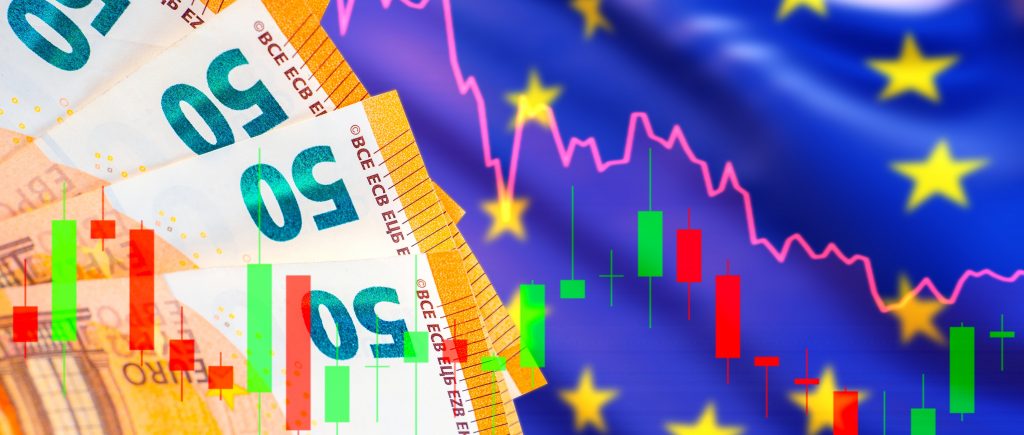The EUR/USD pair continues its precarious slide, dipping to 1.15677 with a modest 0.02% daily drop, extending a broader monthly decline of 1.42%. This movement highlights a troubling truth: even as the Euro has notched an impressive 11.71% year-to-date gain against the Dollar, persistent trade frictions and political instability are eroding that momentum, raising questions about the currency’s resilience.
Dismissing these as fleeting distractions overlooks their potential to trigger sustained volatility, especially in a world where economic interconnections amplify every shock. The pair’s narrow day’s range—from 1.15657 to 1.15695—belies deeper undercurrents that could push it lower if unresolved tensions fester.
Trade Tensions Persist, Bolstering Dollar Dominance
President Donald Trump’s tariff threats, including a proposed 100% levy on Chinese goods effective November 1, have kept markets on edge, reinforcing the Dollar’s safe-haven status despite a partial walk-back via social media assurances of amicable resolutions with President Xi Jinping.
This back-and-forth mirrors the 2018-2019 trade disputes, which fueled Dollar gains exceeding 5% against key currencies, but today’s environment feels more volatile amid strained global supply chains and rare-earth restrictions from China.
The US Dollar Index’s 0.35% rise to 99.24 underscores how such geopolitical jousting outweighs domestic factors, pressuring export-reliant Eurozone nations. Critics might claim these are mere negotiations, yet the evidence points to prolonged uncertainty that hampers recovery. With the pair’s six-month uptick of 1.49% now at risk, this dynamic challenges the assumption that trade resolutions will arrive swiftly, potentially capping any Euro rebound in the near term.
Political Headwinds in France Exacerbate Euro Weakness
France’s ongoing governance turmoil adds another layer of strain, as President Emmanuel Macron’s reappointment of Sébastien Lecornu as Prime Minister faces a no-confidence motion that threatens cabinet stability. This echoes past Eurozone crises, such as Italy’s 2018 fiscal standoff, which dragged the Euro down nearly 10% in a matter of months.
In France, with budget deficits under the microscope, such instability could deter investment and widen spreads, overshadowing the currency’s longer-term strengths.
Recent data from the University of Michigan Consumer Sentiment survey, easing to 55 amid pessimism over personal finances and durable goods purchases, signals cross-border ripple effects. Inflation expectations dipping to 4.6% for the one-year horizon might suggest cooling pressures, but they do little to offset the Euro’s five-day slide of 0.52%.
If the no-confidence push succeeds, markets could see intensified selling, exposing vulnerabilities in the Eurozone’s core and questioning whether political cohesion can be restored before economic damage mounts.
Central Bank Signals Offer Limited Buffer
As traders await insights from Federal Reserve Chair Jerome Powell and ECB President Christine Lagarde this week, policy divergence remains a focal point. Philadelphia Fed President Anna Paulson’s push for further rate cuts, citing mounting labor market risks, aligns with a 97% market probability of a 25-basis-point Fed reduction on October 29.
Meanwhile, Eurozone indicators like Germany’s upcoming Harmonized Index of Consumer Prices and remarks from ECB official Mario Cipollone could hint at a more measured ECB approach.
However, these monetary tools appear insufficient against external forces, as the pair’s one-year gain of 5.82% risks reversal. Opposing views might highlight the Euro’s all-time surge of 115.49% since 1999 as proof of enduring strength, but current volatility—stemming from the world’s most traded pair—suggests otherwise.
Without decisive action on trade and politics, expect continued downward pressure, prompting a rethink of strategies reliant solely on central bank interventions.
Investors and traders should maintain reasonable caution, staying abreast of unfolding events to navigate potential pitfalls.
In this interconnected landscape, underestimating these pressures could prove a costly oversight, reminding us that true currency stability demands more than policy tweaks—it requires global harmony.

 Noor Trends News, Technical Analysis, Educational Tools and Recommendations
Noor Trends News, Technical Analysis, Educational Tools and Recommendations




